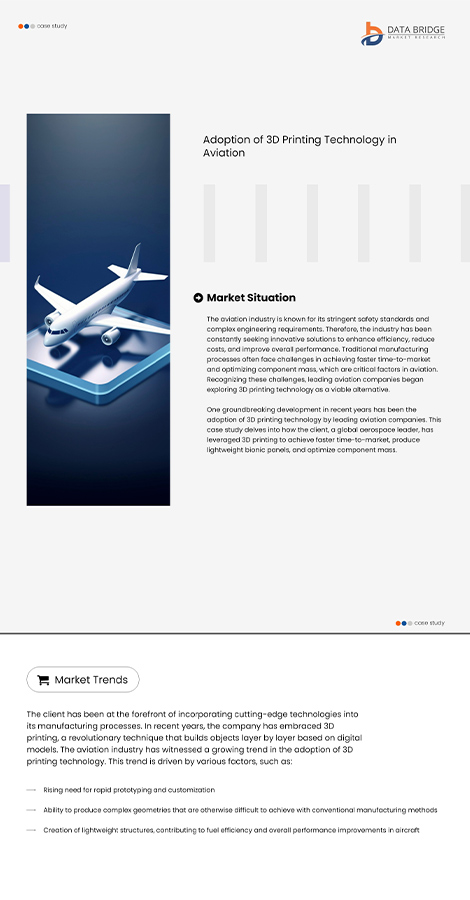Market Situation
The aviation industry is known for its stringent safety standards and complex engineering requirements. Therefore, the industry has been constantly seeking innovative solutions to enhance efficiency, reduce costs, and improve overall performance. Traditional manufacturing processes often face challenges in achieving faster time-to-market and optimizing component mass, which are critical factors in aviation. Recognizing these challenges, leading aviation companies began exploring 3D printing technology as a viable alternative.
Market Trends
The client has been at the forefront of incorporating cutting-edge technologies into its manufacturing processes. In recent years, the company has embraced 3D printing, a revolutionary technique that builds objects layer by layer based on digital models. The aviation industry has witnessed a growing trend in the adoption of 3D printing technology. This trend is driven by various factors, such as:
- Rising need for rapid prototyping and customization
- Ability to produce complex geometries that are otherwise difficult to achieve with conventional manufacturing methods
- Creation of lightweight structures, contributing to fuel efficiency and overall performance improvements in aircraft
Client Challenges
The aviation industry's challenges included meeting stringent regulatory requirements, reducing time-to-market, and optimizing the weight of components without compromising structural integrity. Traditional manufacturing methods often struggled to address these challenges efficiently.
Despite the numerous advantages, the adoption of 3D printing in aviation is challenging. The client has navigated issues related to material selection, quality control, and certification processes. Overcoming these hurdles required collaboration with regulatory bodies and continuous refinement of printing technologies.
